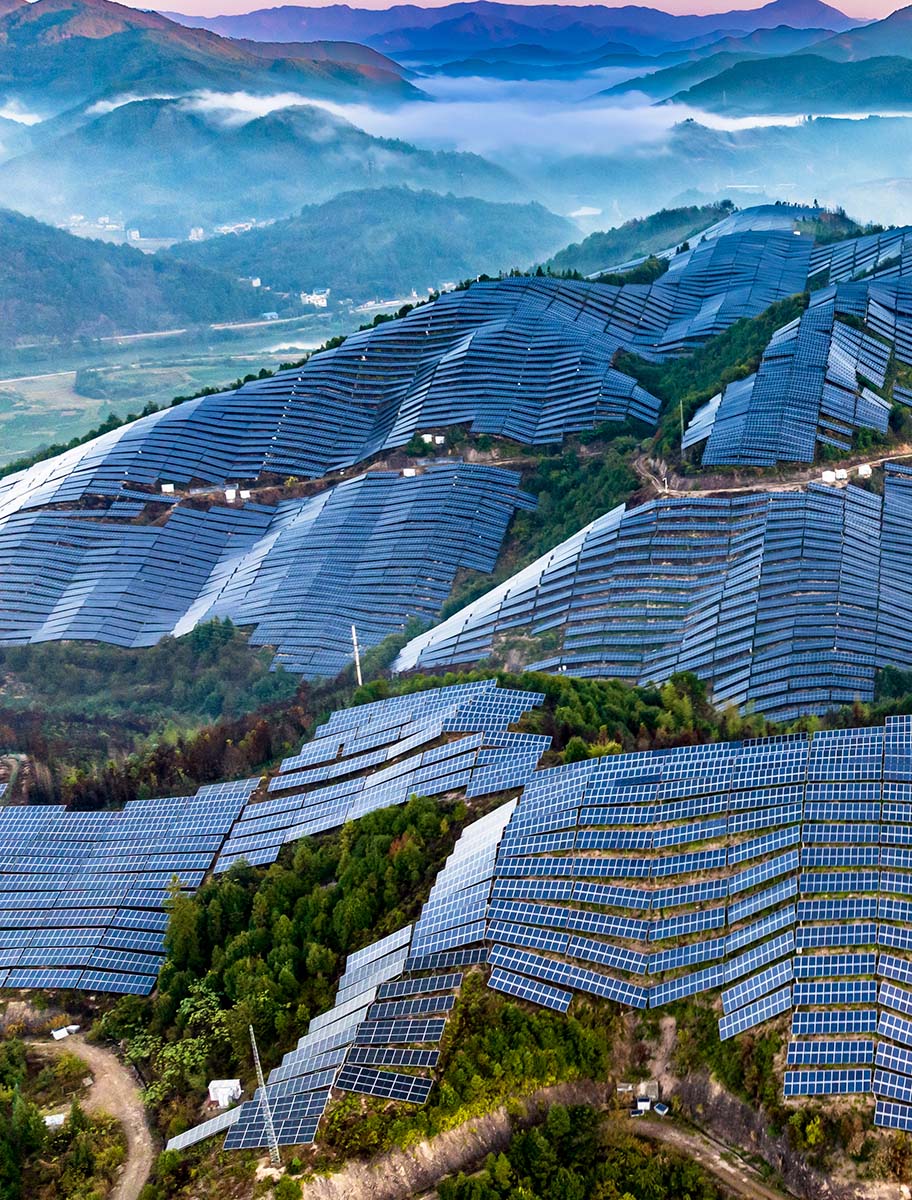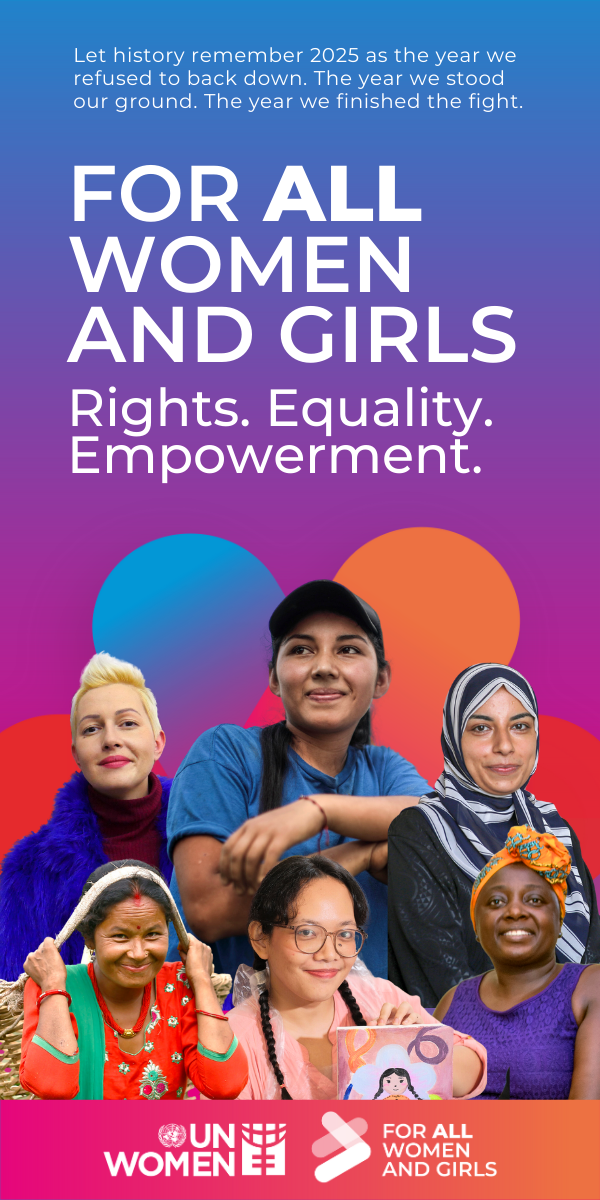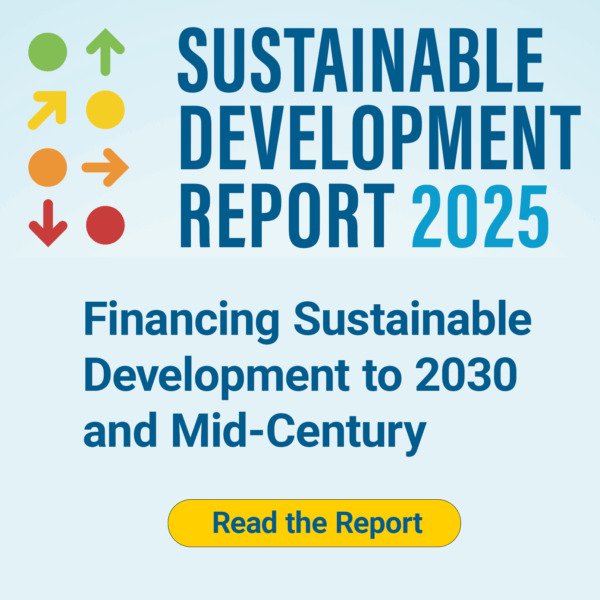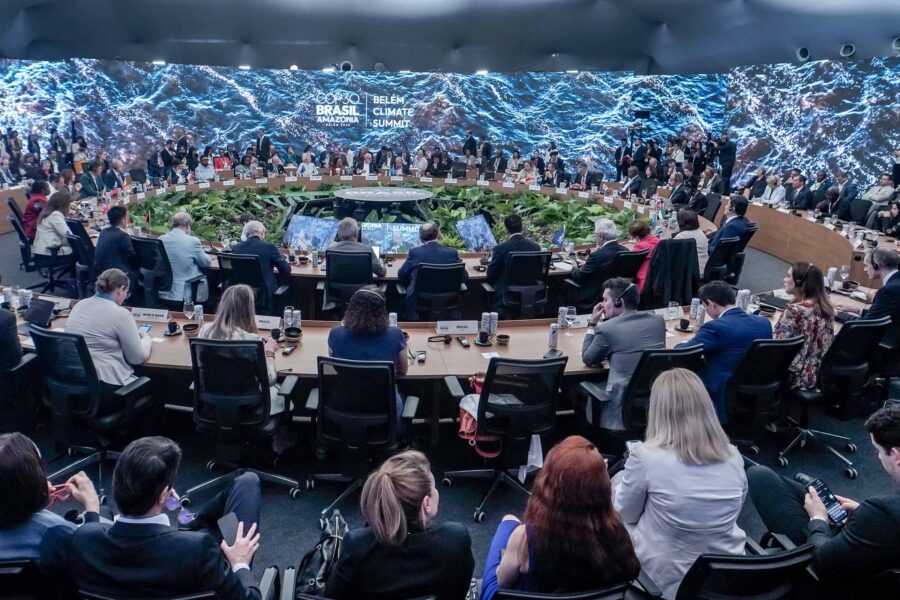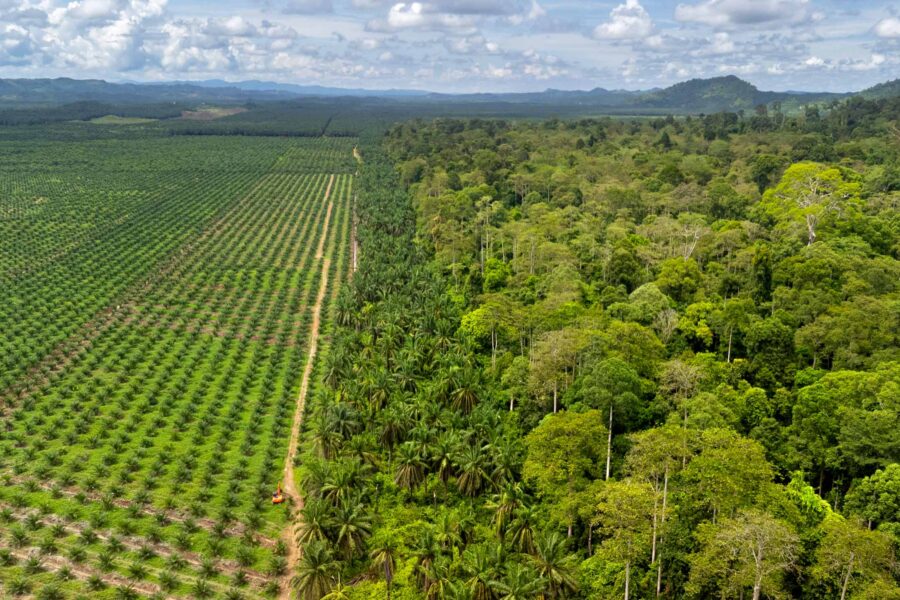Growing a green generation
As the green transition accelerates, millions of new jobs will emerge – but the skills needed to fill them are evolving even faster. Preparing children and young people for this future means rethinking education, work, and what “green” really demands of us
Climate — Global
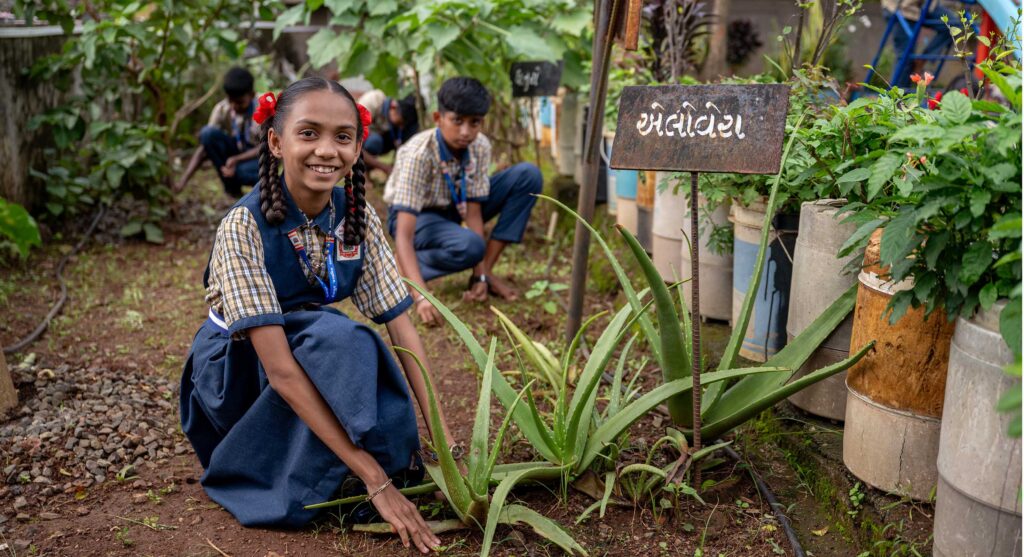
As the world grapples with the triple planetary crises of climate change, biodiversity loss, and environmental degradation, the concept of a “green economy” has moved from the periphery to the center of global policy and business agendas. Consequently, the twin aspirations of getting to net-zero carbon emissions and living up to the promise of the Paris Agreement are likely to shape the lives of the next generation of young people.
According to UN Environment Programme (UNEP), a green economy is one that delivers improved wellbeing and social equity while significantly reducing environmental risks and ecological scarcities. Green jobs play a critical role in building a climate-ready world and shaping this green economy.
The International Labour Organization (ILO) defines green jobs as “decent jobs that contribute to preserving or restoring the environment.” They span sectors from renewable energy to sustainable agriculture and environmental policy. They include jobs that produce green products and services (including on climate change mitigation and adaptation) and jobs that help to reduce the environmental impact of businesses.
Green skills, meanwhile, are the knowledge, abilities, values, and attitudes needed to live in, develop, and support a sustainable and resource-efficient society. These include the technical skills such as engineering, science, and operations management that are used in green occupations. But they also include transferable skills like decision-making, teamwork, leadership, risk management, communication, creativity, and problem solving.
With the UN estimating that more than 30 million jobs could be created in clean energy, efficiency, and low-emissions technologies by 2030, the opportunity is clear: investing in green skills today means unlocking a greener workforce tomorrow.
But are green skills enough to ensure a climate-safe world? How do we ensure “greening” other skills – and what does that mean?
“Greening” skills: beyond green jobs alone
While the development of green skills is essential, it is equally vital to embed sustainability and environmental awareness across all skill sets, not just those traditionally associated with the green economy. “Greening” other skills means infusing sustainability principles into every domain – whether in engineering, business, healthcare, or the creative industries – so that all sectors contribute to the transition toward a more sustainable future. This holistic approach ensures that every profession is equipped to adapt to and support climate resilience.
More importantly, “greening” skills involves cultivating transformative capacities for systemic change that go beyond technical expertise. To drive genuine systemic change amid climate uncertainty, individuals need to develop disruptive thinking, political agency, systems thinking, and coalition-building abilities. These skills enable people to challenge the status quo, influence policy, understand complex interdependencies, and unite diverse stakeholders. Integrating these competencies into early education ensures future workforces are better prepared to lead the green transformation and address the multifaceted challenges of sustainability.
Why focus on children and young people?
A Capgemini and UNICEF study highlights that as of 2024, there were over 1.2 billion people aged 16 to 24 in the world, representing a decisive force for addressing the climate crisis. However, the changes required to get to net zero are likely to have a significant impact on the labor markets that young people will be entering.
Children and young people are not just passive recipients of the green transition – they are its most vital agents of change. With the right skills and opportunities, children and young people can lead the charge in advocating for sustainability, innovating new solutions, and holding institutions accountable. Yet, too often, education systems and markets fail to equip young people with the green skills they need to thrive in a rapidly changing world.
UNICEF’s sustainability and climate action work across 137 countries highlights the importance of engaging youth as advocates, entrepreneurs, and leaders in the green economy. From mobilizing millions of young people to protect their communities from the climate crisis, to supporting youth-led initiatives in climate policy, UNICEF’s approach is rooted in the belief that sustainability-driven education from childhood cultivates a workforce ready for the challenges and opportunities of the green transition, and beyond.
Approaches: children and young people as agents of change
1. Mobilizing and empowering young people
One of the most powerful levers for change is youth mobilization. Initiatives like Green Rising, supported by UNICEF, commit to enabling the most vulnerable young people with the knowledge, skills, and opportunities to become champions for the planet, mobilizing 11 million young people across 30 countries in 2024 alone.
In 2024, UNICEF intensified its efforts to prepare future climate advocates and the next generation of climate leaders, training 123 young people from 58 countries across Africa in strategic planning, policy negotiations, advocacy, and strengthening youth-led groups. These young people promoted child-responsive climate policy recommendations, highlighting the vital role young people play in shaping policy and ensuring accountability for climate action.
2. Green entrepreneurship
Young people are not just advocating for change – they are building it. In 2024, UNICEF supported 40,000 young green entrepreneurs to participate in the green economy.
UNICEF’s Office of Innovation Spark Accelerator 2025 initiative is scaling up solutions for a climate-resilient future through integrated telecommunications and government systems. In Libya, a youth-led, AI-powered early warning system with over 900,000 social media followers monitors extreme heat, solar radiation, flooding, and sandstorms, providing clear alerts and guidance in real time to first responders.
3. Education pathways for sustainability – from school to work
Education is ultimately the foundation of any successful green transition. Integrating sustainability-driven education, from primary school through higher education and apprenticeships, is essential for cultivating systems thinking and green skills. This means not only preparing young people for green jobs but also enabling them to incorporate green thinking into all roles and sectors.
Since 2021, UNICEF has worked with Western Balkans governments to embed environmental education, vocational training, and practical green skills in both formal and informal settings. In Albania, a climate change and sustainable development manual for teachers supported lessons for 124,000 pupils in grades 6 to 9. North Macedonia integrated sustainability into all 14 vocational training programs, while Kosovo and Montenegro improved youth employment with internships, on-the-job training and career guidance, placing 115 young people as interns in sustainability-focused roles in both private and public sectors. Within higher education, in Bosnia and Herzegovina, a digital course on air quality was launched with the University of Sarajevo, making it available to over 15,000 undergraduates.
These stories underscore the importance of creating education pathways across various ages that are inclusive, practical, and aligned with the needs of the green economy.
The interconnected nature of the Global Goals
The Sustainable Development Goals (SDGs) are inherently interconnected, and the development of green skills and jobs sits at the nexus of multiple goals: education (SDG 4), decent work and economic growth (SDG 8), reduced inequalities (SDG 10), climate action (SDG 13), and partnerships (SDG 17), among others. Efforts to equip young people with green skills must therefore be holistic, addressing not only technical competencies but also social, economic, and environmental dimensions.
The Green Jobs for Youth Pact is such an initiative of the ILO, UNEP, and UNICEF that exemplifies the interconnectedness of the SDGs by simultaneously addressing multiple objectives to tackle the green skills deficit. By 2030, it aims to:
- create one million new green jobs for young people – especially women
- accelerate greening of one million existing roles
- support 10,000 young entrepreneurs in sustainable green businesses
Moving beyond platitudes: the hard questions
While optimism surrounds green skills and jobs, significant challenges and areas of contention remain that must be addressed. How can education systems adapt quickly enough to meet the demands of the green economy? What support do marginalized and vulnerable young people need to access green skills and opportunities, especially in lower-middle-income countries?
Crucially, the ILO emphasizes that green jobs must also meet the standards of “decent” work: fair wages, health and safety protections, recognition of workers’ rights, social dialogue, and social protection. How can we ensure that green jobs are truly “decent”? Not all green jobs are created equal: they come in varying “shades of green,” depending on their environmental impact and the extent to which they drive systemic change. How can we ensure initiatives foster “green thinking” across all professions, embedding sustainability as a fundamental value in every job, not just green roles?
These are not easy questions, but they are essential if we are to move beyond platitudes and deliver real progress. Policymakers, educators, employers, civil society, and young people must work together to create pathways that are accessible, equitable, and responsive to the needs of all children and young people to achieve a sustainable “green” economy.
Pathways to progress
Transitioning to a green economy presents both challenges and opportunities. Equipping children and young people with green skills and systems thinking is essential for a just, sustainable future amid climate uncertainty. Achieving this requires bold action, innovative partnerships, and a steadfast commitment to ensuring that no one is left behind.
Young people are already leading the way. To succeed as a generation in a climate-uncertain world, all of us – young and old – must ensure that the pathways to green skills and jobs are open, inclusive, and transformative. We must boldly embed “green” thinking and sustainability within all sectors – and at the core of everything we do.
Featured in:
Climate Action edition 2025
Beyond the disappointing headlines from COP30, progress is still being made on climate action. Even without the roadmap for the phaseout of fossil fuels making it into the conference's final statement, fossil fuels are on their way out. Renewables have already reached the tipping point where they are commercially more attractive than fossil-fuel alternatives - momentum for the transition will start to gather pace.
This edition picks up on themes from the latest COP: systems transformation, human dimensions and planetary stewardship.
Authors include: Yamide Dagnet, Emi Minghui, Selen Inal, Jumpei Takami, Bilel Jamoussi, Karen Ellis, Mohamad Ansarin, Diana Denke, Juan Lucas Restrepo, Beatrice Mosello, Alexandra Steinkraus, Mauricio Voivodic, Meghna Das, Mariana Matoso, Bernardo Arce and Mia Calle.
Publication date: 26 November 2025

